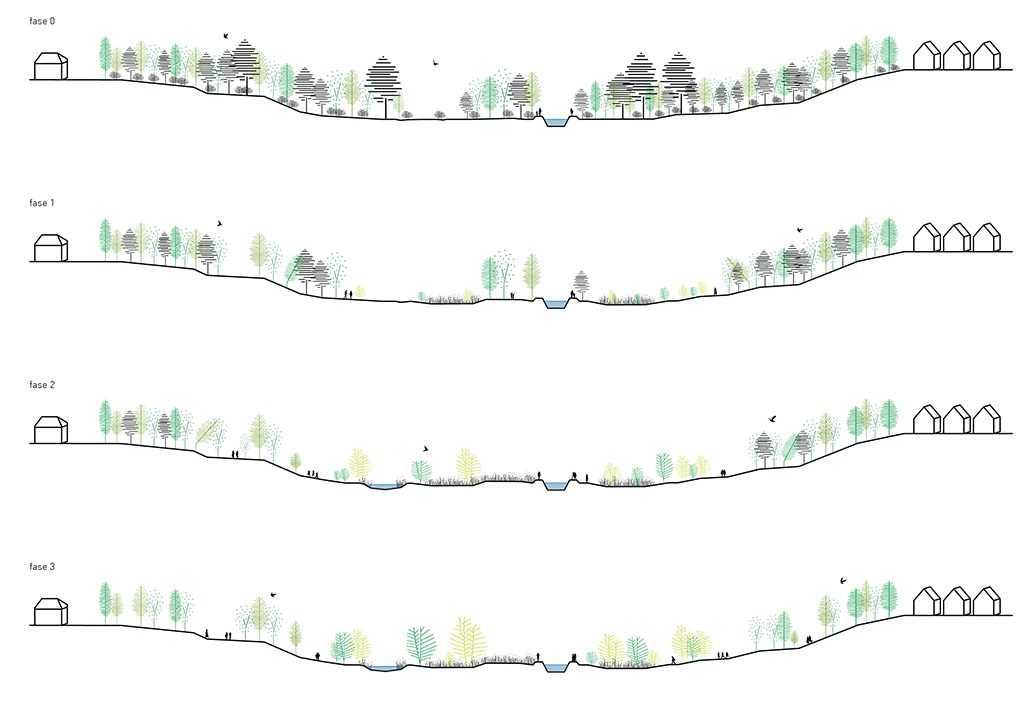Stiemerbeek valley [BE]

Hidden river valley becomes vibrant city park
Over the past several years the Belgian city of Genk has invested in projects to strengthen its urban cohesion and liveability. Yet despite the conversion of old coalmining sites into various new sports, cultural, research and creative centres, an overall integration was still lacking. The city decided to improve the situation by making use of the underlying landscape as a connective element, while simultaneously increasing the quality of urban spaces. BOOM Landscape submitted to an open call by the Chief Planning Officer of Flanders for the design of an urban park.

It was no simple task because the valley landscape and stream (Stiemerbeek) that once meandered here have become so intertwined with the city that they have all but disappeared into the urban fabric. Also, past interventions that straightened the stream have left some areas unnaturally dry and some areas disconnected from the greater whole of the landscape. The water quality is also in danger because with heavy rainfall, the overflow of the sewer system goes (along with rainwater run-off) directly into the stream.

Reconnecting river, valley and city
BOOM designed a plan that reconnects Stiemerbeek with the surrounding landscape and the urban landscape – which has the added benefit of allowing those that live here to engage in the environment again. Reconnecting must start by revealing the landscape again. A water management system that is self-cleansing and once again nourishing for the ecosystem will make it complete. A restored landscape also provides a beautiful setting for a new and lively city park. It will be a park that really is a part of local life, inviting everyone to use its space and feel a connection. The design leaves room for large-scale and small-scale local initiatives, an important aspect in our vision.

Purified and rich valley landscape
Cleaning up the stream and the surrounding lands requires a separation of systems: clean rainwater must be kept separate from the sewage network. The rainwater can then flow, via buffers, infiltration and filtering, into a clean stream that will twist and turn parallel to the current straight run. Overflows from the sewage will be directed into special filters before entering the parallel stream as clean water.
All of this will have a big impact on the vegetation of the banks. Aided by smart new plant choices, this is an opportunity for the landscape around the water to become even richer and more dynamic and varied.

Park boulevard and looping network of routes
The interaction between the city, its residents, the landscape and the various functionally zoned centres is shaped by a looping network of new and existing pedestrian and cycle routes: one long ‘valley parkway’ running north-south with multiple east-west crossings. These also give new access to certain areas. Appropriate regional greenery, potentially even to be determined by local clubs and organisations, will enhance the shoulders. Finally, water will play an important recreational role: fishing or swimming in ponds created by the new cleansing system will be possible, as will picnics at viewpoints and terraces overlooking the water. It will be a city park that brings urban dwellers together.
